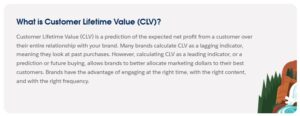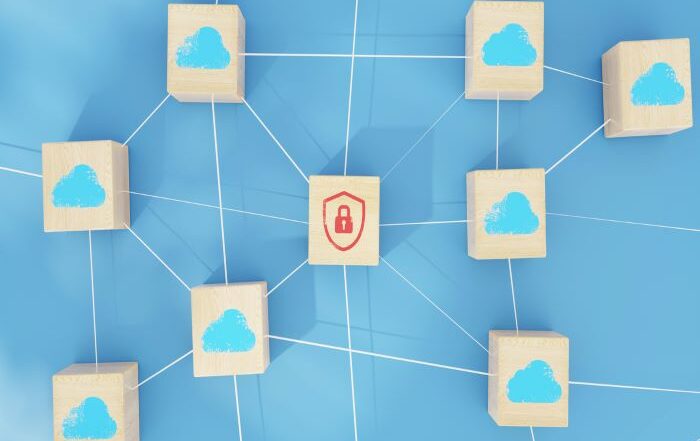How to Maximize Customer Lifetime Value with Salesforce
Put succinctly, business growth requires customers. Companies need to acquire them and, more importantly, retain them. So, how can Salesforce help businesses maximize customer lifetime value (CLV)?
Understanding customer lifetime value is crucial for making the needed adjustments to maintain loyal buyers. Salesforce can help you do that. Let’s begin by defining customer lifetime value and how that plays a role in company growth.
What is Customer Lifetime Value?
Customer lifetime value is a customer’s total worth to a business over the entire period of their relationship with the brand— not just from a purchase. It’s a vital metric since it costs less to keep a customer than obtain a new one. Calculating CLV sheds light on several questions:
- How long does it take to break even from the cost of acquiring a new customer?
- For subscription-based services, which customers have a higher CLV? The ones purchasing a monthly plan or a yearly plan?
- Who are your VIP customers?
Using CLV data to increase the worth of your existing buyers is an effective method for driving growth. Other abbreviations for customer lifetime value are CLTV and LTV.
How do you calculate CLV?
To calculate customer lifetime value, first determine the number of customers (whether all of them or a particular group) and the timeframe (a month, a quarter, or a year). You can obtain the average purchase value (APV) by dividing the total revenue generated by those customers in that timeframe by the number of purchases. The formula looks like this:
| AVERAGE PURCHASE VALUE (APV) | = | TOTAL REVENUE GENERATED |
| # OF PURCHASES |
Next, obtain the average purchase rate (APR) by dividing the total number of purchases by the number of unique customers.
| AVERAGE PURCHASE RATE (APR) | = | TOTAL # OF PURCHASES |
| # OF UNIQUE CUSTOMERS |
Then, calculate the average customer lifespan (ACL). The ACL is the average number of years a customer continues shopping with your company. You reach this number by dividing the total amount of time customers are active by the number of customers.
| AVERAGE CUSTOMER LIFESPAN (ACL) | = | TOTAL TIME CUSTOMERS ARE ACTIVE |
| # OF CUSTOMERS |
Finally, you calculate the customer lifetime value by multiplying the average purchase value by the average purchase rate and the average customer lifespan.
| CLV = APV x APR x ACL |
Now you can identify the amount of revenue you can expect from a customer throughout their relationship with your business.
Three Ways to Maximize Customer Lifetime Value
It’s a good idea to obtain a baseline CLV before implementing the strategies we’re about to discuss and obtaining another one afterward so you can see how effective the techniques are at increasing your CLV. Repeat this process continually.
Customer experience statistics reveal that businesses obtain loyal customers by giving them personalized shopping experiences, earning their trust, and leveraging artificial intelligence to deliver excellent customer support. Therefore, these recommendations top the list of ways to maximize customer lifetime value.
-
Create Personalized Shopping Experiences
For companies that market and sell through partner networks (e.g., franchisees, resellers, insurance agents, etc.), delivering personalized shopping experiences at a large scale can be challenging. Salesforce’s Distributed Marketing platform simplifies that work for brands.
Distributed Marketing is a messaging platform that connects departments within a company and partners businesses to create and manage brand messages across digital channels and devices. Distributed Marketing is the bridge that connects your customer data from a cloud resource, like Sales or Experience, with the marketing team’s message they create in Marketing Cloud. Then, through Distributed Marketing, a company can quickly send personalized versions of those messages to its customers through any of these avenues:
- campaigns
- contact records
- leads records
- person account records
-
Earn Your Customers’ Trust
Customers look to see how companies handle:
- diversity in the workplace and management positions
- social and environmental issues
- acquiring materials ethically
- transparency to its customers
When businesses make a concerted effort to address these items, they build buyer trust, maximizing customer lifetime value.
As an example, Salesforce encourages companies to provide transparency when using Interaction Studio. Several recommendations include:
- Let customers know what information your company collects from them and how you’re using it. Explain the benefits of receiving such data and provide an option for customers to opt-out.
- Don’t bury the data collection information in the privacy policy or the terms and conditions.
- Only ask and collect data needed by the company.
You can also use Interaction Studio to ensure you target the customer’s intent, not making assumptions based on demographics. In the same document outlining ethical use of data, Salesforce provides an example with a marketing campaign for makeup. If marketers only select the female subset of customers, it could hurt the brand. Instead, Interaction Studio Recipes leverages customer behaviors and other attributes to create a targeted campaign.
3. Enhance Customer Service with AI
Einstein is Salesforce’s artificial intelligence tool. Its smart bots can answer simple customer questions so your support agents can tackle more complex issues. Even when employees need to handle the more challenging cases, Einstein can arm them with the required knowledge, recommendations, and replies. Customers appreciate not having to repeat the same information when routed to different departments.
Maximize Customer Lifetime Value with Rainmaker
When you want to maximize customer lifetime value, partner with the experts at Rainmaker. We provide many Salesforce-enabled services to help you grow, improve sales strategies, and retain your customer base by ensuring that employees have the data they need to deliver positive customer experiences. Our dedicated team can help you integrate robust solutions and processes, including Distributed Marketing, Interaction Studio and Einstein, to leverage all your collected information.
Contact Rainmaker today to learn more about maximizing customer lifetime value!








